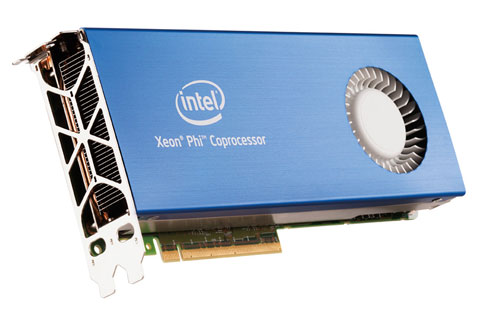
It may look like a GPU compute card, but the Intel Xeon Phi actually contains over 500 CPU cores, heralding the future of Intel’s Many Integrated Core Architecture (Intel MIC architecture)
Intel has lifted the lid on a new PCIe co-processor that could be used to accelerate highly parallel simulation (CAE) solvers inside a workstation.
The Intel Xeon Phi (codenamed Knights Corner) will feature over 50 x86 CPU cores, have a minimum of 8GB of GDDR5 memory and deliver over 1 TeraFLOPs of double precision performance.
While the Xeon Phi will initially target high performance computing (HPC), Intel said that future generation products will also address workstations.
Having a CPU co-processor inside a workstation could be a particularly interesting proposition for desktop simulation. The CAE solver would run on the highly parallel Intel Xeon Phi, leaving the workstation’s main Xeon processor free for other tasks – a workflow that is currently championed by Nvidia’s Maximus technology (which uses Nvidia Tesla GPUs).
Intel is keen to point out that its x86 CPU-based Xeon Phi will be visible to applications as a separate compute node that runs its own Linux-based operating system, which will offer more flexibility when implementing cluster solutions.
To put this into perspective, while some of the key CAE software developers, such as Ansys and Simulia Abaqus, already offer solvers that run on Nvidia Tesla GPUs (using CUDA and to a lesser extent OpenCL), there are still many CAE apps that don’t. With many of these already having a distributed memory solver that runs on Linux clusters, Intel will no doubt be hoping its Xeon Phi will be a more attractive proposition to CAE software developers than completely rewriting the solver code to work with GPUs (CUDA or OpenCL).






